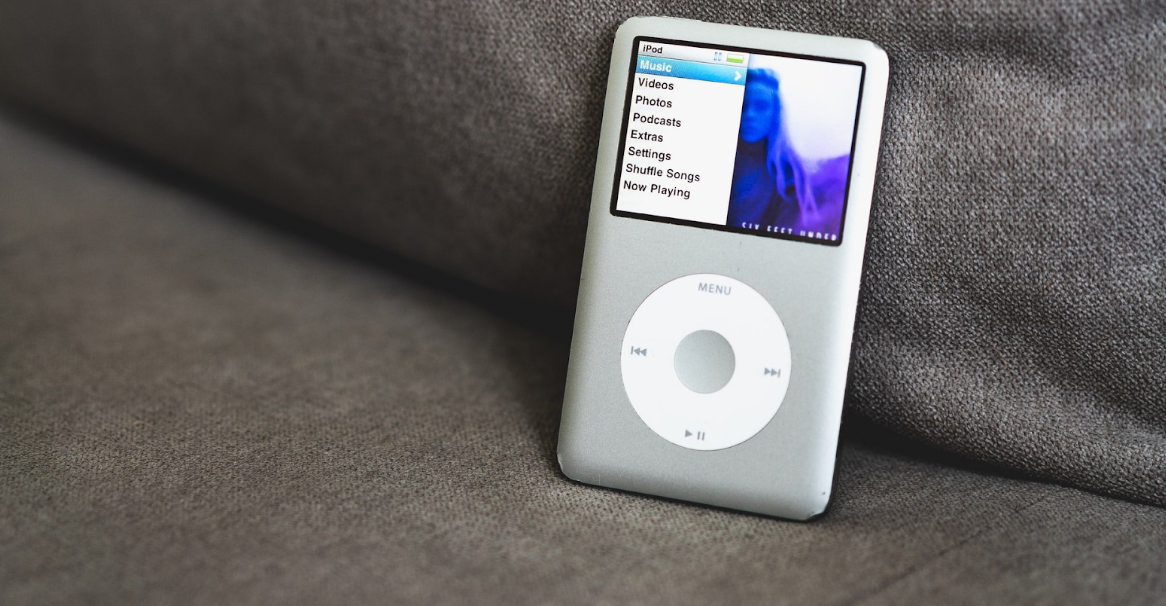Elie Monnickendam, Year 12
The iPod Classic, maybe one of the most recognizable products of the modern day, has made an unexpected resurgence in popularity. But what is the iPod? The first ever model was released in 2001, being a brick-like metal MP3 player, with heavy buttons that made a satisfying click. The release of the iPod started a new era in the music industry, bringing people to buy and listen to music on portable devices. Every year, new versions of the iPod were released, but the year 2007 gave birth to the iPod we all know and love. The iPod Classic (pictured above) had a max capacity of 160GB worth of songs, had a colour screen and had a satisfying and smooth scroll wheel used to navigate the lush, colourful software. The iPod started a new theme in 2010’s genre of style and fashion, gaining a lot of media recognition. I guarantee that you’ve seen the iPod Silhouette ads, showing the shape of a person dancing or striking a pose, while holding an iPod. This ad brought Apple and its iPod gravitas, solidifying it in the world of music and personal media.
Some people ask why iPods are coming back nowadays, and that’s a fair question. The practicality of music streaming is simply superior to lugging around a “music brick,” with the advantage of nearly infinite music choices and the flexibility of playlists, podcasts, and such. People who enjoy using iPods usually share one opinion: that of owning their own music. Many iPod nerds claim that owning your own music is liberating, ironically enough. Owning music makes you think about what you listen to, what you enjoy, and what you actually think is worth listening to. Another good reason that people encourage owning their own music is the fact that streaming platforms have the right to remove music outright from their hands. Many companies have and will remove or modify music that you own; which is a common practice done by Apple Music. I find it ironic that Apple products are used to battle an issue Apple has. One advantage of music ownership is offline access. If you obtain your music legally, you can listen to it anywhere and everywhere! Don’t forget that in Switzerland, you can legally download copyrighted content (this includes music!) if you only share it with friends and family, but please do your own research before doing anything.
iPods are also becoming more popular because of the large modding community. iPods were designed with functionality in mind, and the concept of soldered components was still uncommon. People, therefore, cracked open the iPod and looked for anything they could meddle with. iPods now can be fully modified; ranging from simple battery upgrades to complete overhauls, with bluetooth and USB-C. One amazing website that provides parts for all iPods is Elite Obsolete Electronics, which sells any parts and even fully upgraded iPods for out-of-the-box use. The iPod modding community also likes to meddle with software. By default, iPods come with the iPod Firmware, being the software that everyone recognizes (also pictured above). But some people have taken a liking to Rockbox, a custom designed firmware for the iPod that supports more file formats than the original iPod, allowing users to listen to FLAC files (known for their amazing sound quality). Rockbox also permits custom software to be installed, such as video players, a game-boy emulator and other cool utilities. If you own an iPod that you want to mod, I recommend the DankPods YouTube channel owned by an eccentric Australian tech nerd.
All in all, the iPod community is growing by the day. iPods are becoming cool again!; and to be honest, I like it a lot. I love to see people interested in old-school tech, and how to meddle and modify it. This really is an amazing example of “Create, not Consume.” Suppose you want to mess with digital minimalism, or owning your music. I’d recommend you read my other article, “The Anti-Phone Phone Club,” which discusses the advantages and disadvantages of not having a phone.



